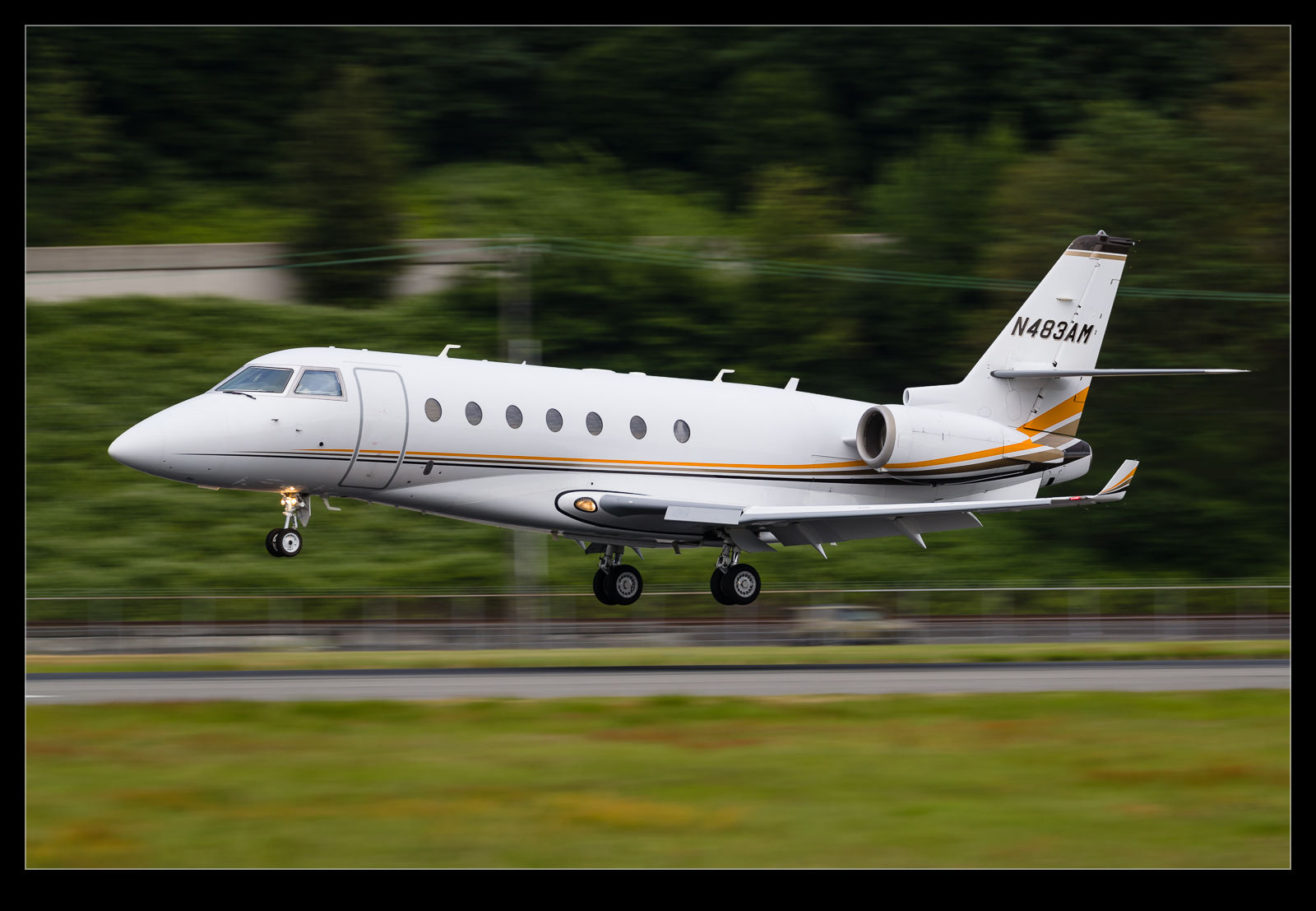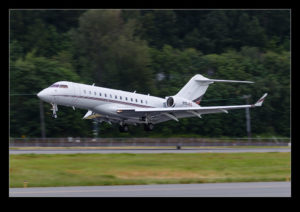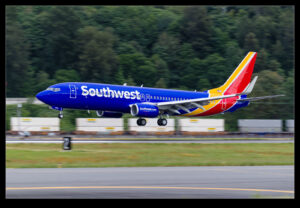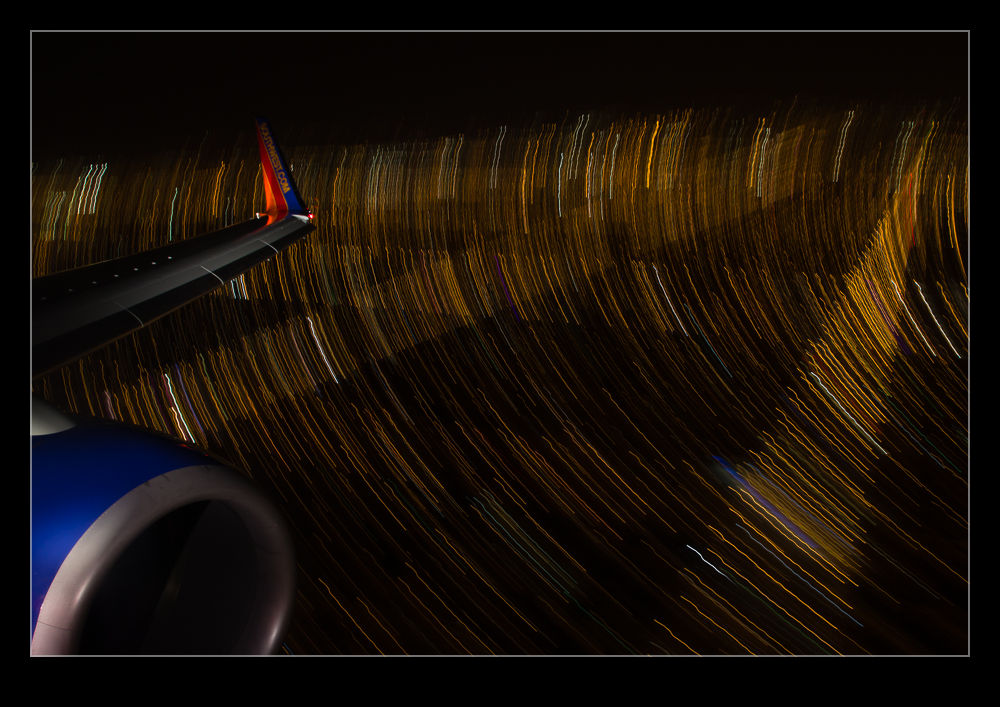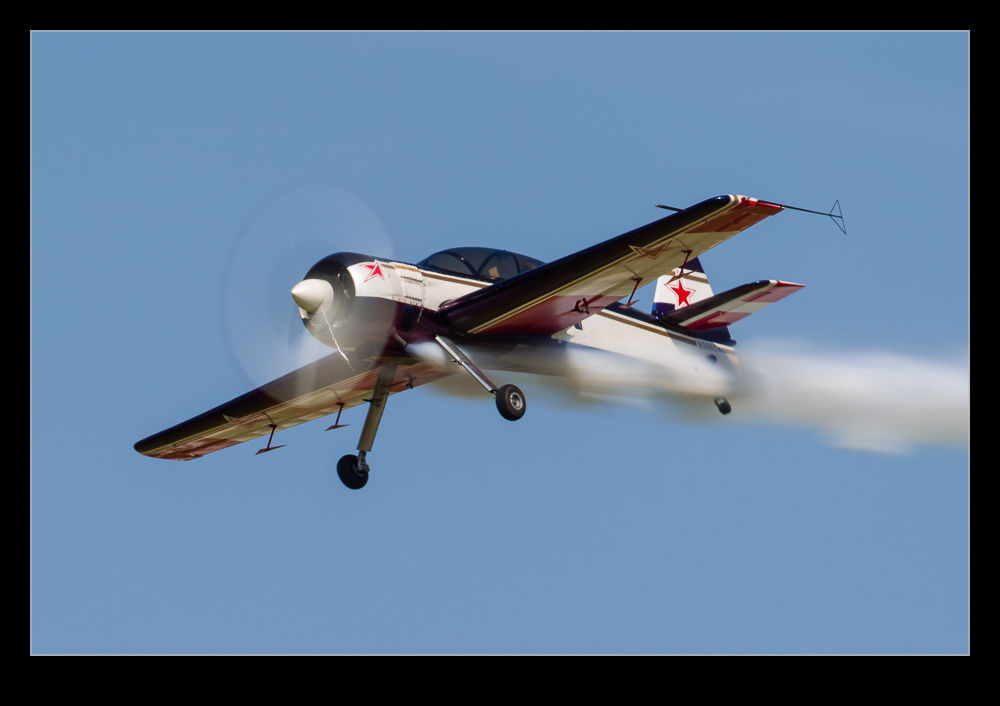 Ask any aviation photographer about camera settings and they will quickly turn to shutter speed for prop aircraft. The goal is a nicely blurred prop and no frozen blades. This requires a slow shutter speed and this can have downsides. If you are using a long lens, getting a sharp shot of a moving target with a low shutter speed can be tricky. A bit of spray and pray with the shutter button can be required. Interestingly, if you are closer to the aircraft and using a shorter focal length, things are not necessarily better. When you are close in, the different parts of the airframe are actually moving at different speeds and angular rates to you so one part might be sharp when another isn’t. Sometimes this looks okay but often it just looks crap.
Ask any aviation photographer about camera settings and they will quickly turn to shutter speed for prop aircraft. The goal is a nicely blurred prop and no frozen blades. This requires a slow shutter speed and this can have downsides. If you are using a long lens, getting a sharp shot of a moving target with a low shutter speed can be tricky. A bit of spray and pray with the shutter button can be required. Interestingly, if you are closer to the aircraft and using a shorter focal length, things are not necessarily better. When you are close in, the different parts of the airframe are actually moving at different speeds and angular rates to you so one part might be sharp when another isn’t. Sometimes this looks okay but often it just looks crap.
I have become less focused on gaining the great blur for ground shots. Air to air it is something a lot more worthwhile since the other plane is not moving relative to you – well, hopefully not that much. Therefore, you can experiment going slower with hopefully some good results. Similarly, when I am shooting helicopters close in and hovering, I will give it a go too.
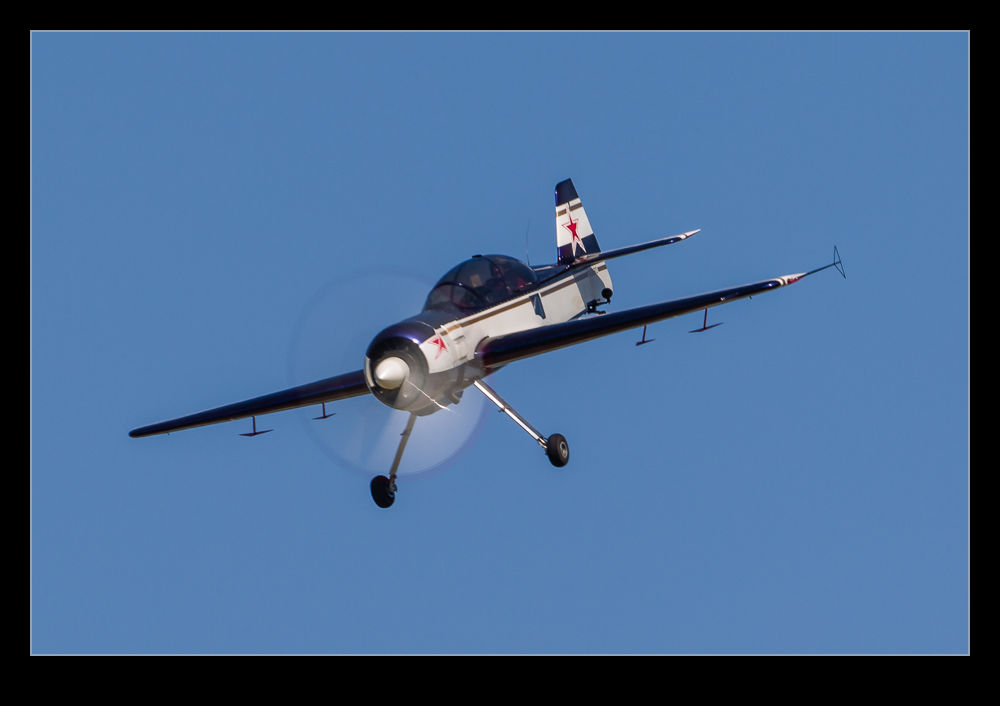 Recently, I was at the Waukegan show and I decided that, since what I was shooting was not something that I had to get (either I would have other chances or I wasn’t so bothered anyway), I would play with some really low speeds. I ended up shooting at 1/80th of a second which, on a 500mm lens is a stretch. Needless to say, you are not going to see the failures. When I have played like this before, I have had times when not one of the shots was of any use. However, this time I did get a few lucky results – yes, they were luck. You can have great panning technique (which is not always true for me) but the math is not in your favor when doing this. Therefore, I shall be happy with the results this time around. I won’t be doing this all of the time but playing around is an important thing to do when you have the chance. Just don’t do it when you really want to have a shot you can keep.
Recently, I was at the Waukegan show and I decided that, since what I was shooting was not something that I had to get (either I would have other chances or I wasn’t so bothered anyway), I would play with some really low speeds. I ended up shooting at 1/80th of a second which, on a 500mm lens is a stretch. Needless to say, you are not going to see the failures. When I have played like this before, I have had times when not one of the shots was of any use. However, this time I did get a few lucky results – yes, they were luck. You can have great panning technique (which is not always true for me) but the math is not in your favor when doing this. Therefore, I shall be happy with the results this time around. I won’t be doing this all of the time but playing around is an important thing to do when you have the chance. Just don’t do it when you really want to have a shot you can keep.
 I was killing some time at Boeing Field and the light was dropping fast. There was a variety of traffic inbound but nothing that counted as terribly unusual and not, therefore, something I desperately cared about getting a good shot with. As a result, I decided to play around with low shutter speeds to see how it changed the look of the shots at a familiar location, to see how the sharpness varied across the airframe and to see just how badly may panning skills have degraded. Needless to say, the results were pretty mixed. The worst of the lot will clearly never see the light of day but here you can see some of the shots that I was okay with. The conclusion from the output is that I should go a bit lower in shutter speed to increase the sense of speed.
I was killing some time at Boeing Field and the light was dropping fast. There was a variety of traffic inbound but nothing that counted as terribly unusual and not, therefore, something I desperately cared about getting a good shot with. As a result, I decided to play around with low shutter speeds to see how it changed the look of the shots at a familiar location, to see how the sharpness varied across the airframe and to see just how badly may panning skills have degraded. Needless to say, the results were pretty mixed. The worst of the lot will clearly never see the light of day but here you can see some of the shots that I was okay with. The conclusion from the output is that I should go a bit lower in shutter speed to increase the sense of speed.